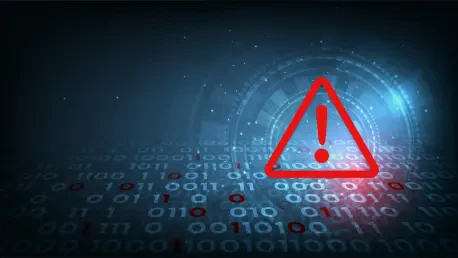In the digital realm where cybersecurity once primarily focused on safeguarding data and networks, another formidable threat has re-emerged with renewed complexity: hacktivism. Originating in the 1990s, hacktivism served as a form of digital protest against authoritative entities, employing tactics such as website defacements and distributed denial-of-service (DDoS) attacks. Though its influence waned in the face of tightened cybersecurity measures and intensified law enforcement, the recent surge in geopolitical tensions has propelled hacktivism back into the spotlight. This resurgence, coupled with sophisticated strategies, underscores its transformation into a key player in the geopolitical landscape, highlighting the necessity for a comprehensive understanding of its modern-day intricacies.
The Transformation of Hacktivism
The shift in hacktivism’s nature is deeply intertwined with the evolution of global politics. Initially driven by individual actors motivated by ideological convictions, hacktivism’s current landscape is shaped by a diverse array of participants pursuing broader objectives. The proliferation of information technology and the growing interconnectedness of global societies have facilitated a more strategic and resourceful approach to cyber activism. This evolution is evident in the manner hacktivists blend cyber tactics with information warfare and, at times, physical disruptions, to achieve their goals. The metamorphosis from ideologically driven endeavors to calculated maneuvers driven by geopolitical agendas marks a significant turning point. State-sponsored organizations often employ hacktivist personas to mask their activities, blurring the lines between independent actors and state-backed forces.
Hacktivism’s resurgence is driven by a rise in international conflicts and strikingly underscores its strategic potential as a tool for foreign influence. Nations are increasingly harnessing hacktivist facades to disseminate geopolitical narratives while retaining plausible deniability. This strategic adaptation, evident in the growing frequency and intensity of hacktivist activities, highlights a profound evolution in the domain of cyber threats. Recent trends demonstrate how state-sponsored entities use hacktivist collectives to further their interests, often without direct involvement, making it challenging to differentiate between authentic grassroots activism and orchestrated operations. The resurgence underscores the urgent need for a recalibration of strategies to address this evolving challenge.
Exploiting Anonymity and Influence
One of the defining features of modern hacktivism is its adept use of anonymity, allowing actors to shroud their intentions while manipulating narratives. Through a fusion of technical skill and strategic communication, hacktivists can disguise their identities and craft public perceptions. This cloak of anonymity not only facilitates covert operations but also presents state-affiliated actors with opportunities to deny involvement in activities executed under seemingly grassroots guises. The hacktivist landscape is marked by a multiplicity of actors that embrace this anonymity, maneuvering through cyberspace’s shadows with agility. This enables them to engage in a broad spectrum of activities, from launching disruptive attacks to disseminating false narratives.
The flexibility in hacktivism’s operations is fueled by its ability to transcend traditional boundaries, leveraging anonymity to advance agendas and inflict reputational damage. Hacktivists employ diverse tactics, from defacing websites with propaganda to leaking sensitive information, all of which serve to diminish trust and highlight vulnerabilities. Such activities can erode public confidence, forcing organizations to rethink their defense strategies. Effective mitigation involves monitoring hacktivist messaging to anticipate potential disinformation campaigns. The ongoing interplay of anonymity and influence within the hacktivist domain illustrates its dynamic presence and poses significant challenges for ensuring digital security.
Geopolitical Consequences
Hacktivism has become an integral aspect of geopolitical strategy, underpinned by states leveraging pseudo-activist groups to advance narratives and execute operations while maintaining deniability. It has become increasingly common for state-sponsored actors to disguise their efforts using hacktivist fronts, fostering uncertainty about their true affiliations. This development presents a formidable challenge for identifying authentic grassroots activism among the rising tide of state-sponsored activities. High-profile cases exemplify how hacktivist groups become tools of statecraft, serving to further political agendas while muddying the waters of attribution. The utilization of hacktivist personas demonstrates their utility in achieving propaganda and strategic goals in an environment where traditional power structures are increasingly contested.
The fusion of hacktivism with state-sponsored initiatives has reshaped the global political landscape, with consequences that extend far beyond cyberspace. In recent years, notorious groups such as the Iranian-backed CyberAv3ngers and the Russian-influenced APT44 have emerged as conduits for advancing state narratives, often through well-orchestrated campaigns that harness the power of hacktivist personas. By manipulating public perception and fueling discord, these groups amplify the broader objectives of their respective nations. As such, understanding the motivations behind these campaigns and the intricate workings of state-hacktivist collaboration is essential for any entity seeking to navigate the complexities of contemporary geopolitics.
Targeting Broader Horizons
A striking aspect of modern hacktivism is its ability to transcend traditional boundaries, targeting not only direct stakeholders in conflicts but also organizations with peripheral connections. This approach significantly amplifies their impact, allowing hacktivists to extend their reach and visibility across various sectors. By broadening their range of targets beyond immediate geopolitical flashpoints, hacktivists increase not only their potential audience but also the scope of their influence. This strategy often involves attacking high-profile targets, particularly those that provide critical services, thereby ensuring maximum attention and prestige for their cause. The effect is a multidimensional threat landscape, where even entities with limited ties to contentious issues are at risk.
The indiscriminate nature of hacktivism’s targeting further complicates the security landscape, as it reveals vulnerabilities in organizations previously deemed outside primary conflict zones. Pro-Russian hacktivists, for instance, demonstrate this by targeting not only Ukrainian organizations but also those within supportive European nations. The cascading effect of such campaigns serves to intensify political tensions while simultaneously highlighting cybersecurity inadequacies. Organizations must therefore acknowledge the breadth of potential targets and prepare to respond to this evolving cyber menace. Effective protection involves awareness of emerging patterns of hacktivist activities, alongside proactive measures to thwart potential attacks.
Preparing and Mitigating Risks
As the prevalence and complexity of hacktivist activities continue to grow, organizations are faced with the daunting task of distinguishing genuine threats from background noise. Vigilant monitoring of hacktivist operations is crucial to decoding their motivations and tactics, enabling organizations to anticipate potential threats. Proactive surveillance allows defenders to remain informed about active campaigns and adapt strategies to mitigate potential impacts. Tracking the evolution of hacktivist operations can reveal early warning signs of targeting, informing rapid countermeasures and response plans to minimize disruptions. Moreover, understanding hacktivist groups’ historical claims and reputations can aid in discerning new patterns of activities, refining defensive measures.
With hacktivists often employing exaggerated or misleading claims to attract support and attention, thorough analysis of these claims is imperative. This evaluation provides insights into their capabilities and aids in forming a comprehensive picture of the threat landscape. Building robust defenses against hacktivism requires a multi-pronged strategy, drawing on actionable intelligence to guide risk assessments and response protocols. By harnessing technology and collaboration to combat hacktivist threats, organizations can bolster their resilience against the increasingly sophisticated methods deployed by these actors. Ultimately, preparation and adaptability are critical for navigating the evolving landscape of hacktivism.
Navigating the Future of Hacktivism
The evolution of hacktivism is closely linked to the changing nature of global politics. Originally, it was propelled by individuals driven by ideological beliefs. Today, hacktivism encompasses a variety of participants aiming for broader objectives. The widespread access to information technology and the interconnectivity of global societies have paved the way for more strategic and resourceful cyber activism. Hacktivists now blend digital tactics with information warfare and occasionally physical disruptions to fulfill their goals. The transition from ideologically motivated actions to strategic maneuvers influenced by geopolitical agendas signifies a pivotal shift. Often, state-sponsored groups adopt hacktivist identities to hide their activities, confusing distinctions between independent operators and state-backed entities. The revival in hacktivism parallels an increase in global conflicts, emphasizing its potential as a tool for foreign influence. Countries now use hacktivist fronts to spread geopolitical narratives while maintaining plausible deniability, necessitating refreshed strategies to tackle these evolving threats.









